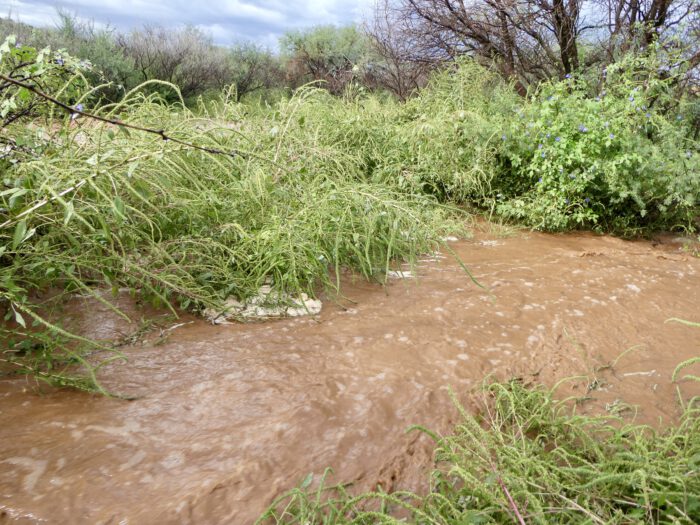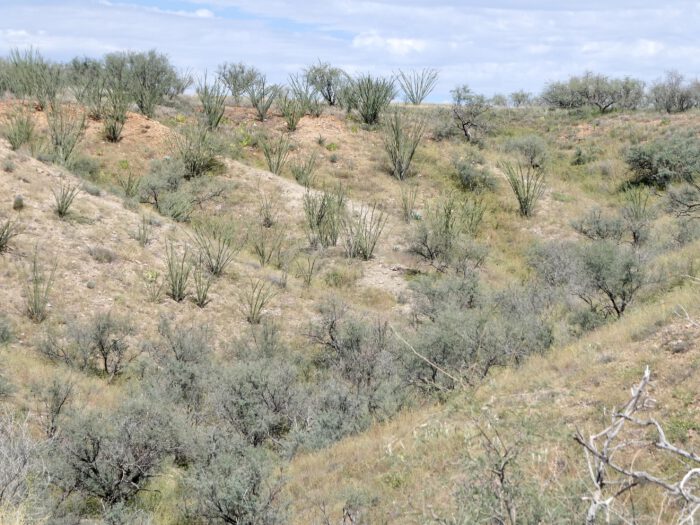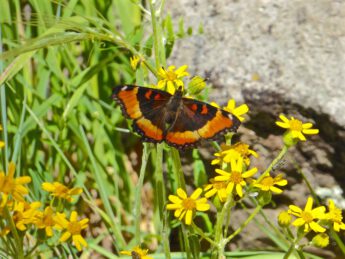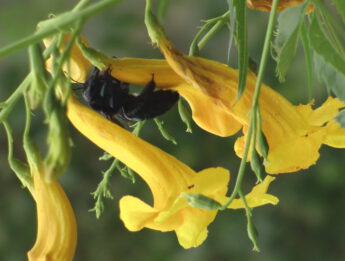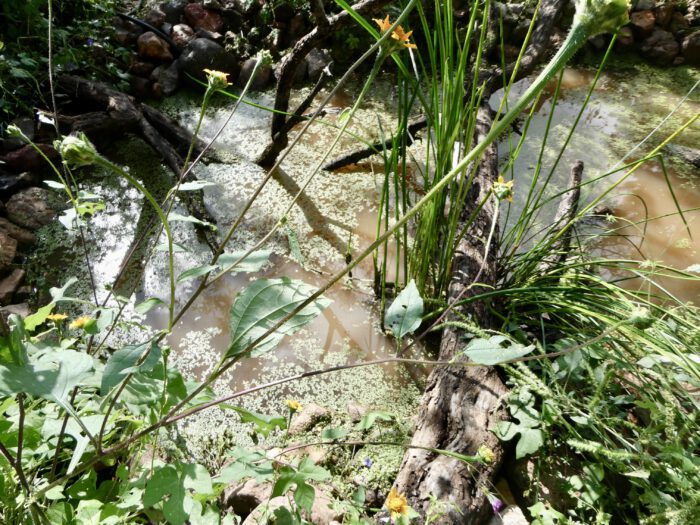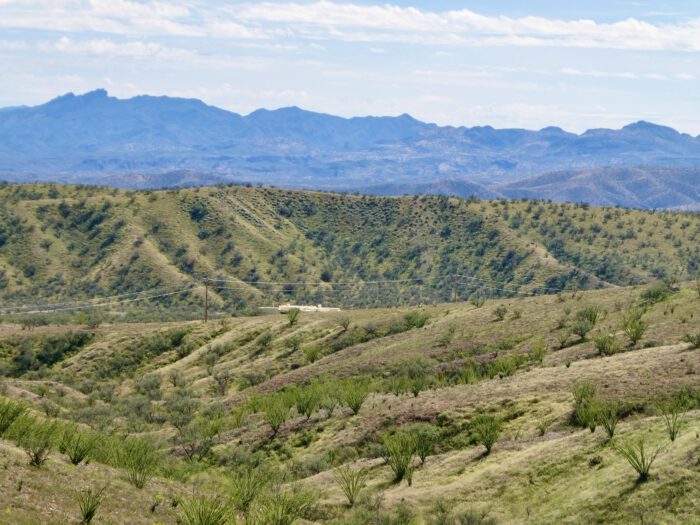
AT RAVEN’S NEST NATURE SANCUARY
Since March 18, 2008, Vincent and Claudia have been committed to preserving and protecting their private Nature Preserve. They were determined to create a Wildlife Sanctuary, conserving the world-class and unique Sky Islands Biodiversity at their 42-acre Nature Sanctuary and contributing to the environmental health of nearby wildlife species populations and ecological diversity.

Since their arrival in 2008 they have been focused on honoring their strategic location in the heart of the Sky Islands via a daily hands-on ecological strategy that includes:
- Managing their Sanctuary for biodiversity and as a wildlife refuge
- Enhancing the land with eco-friendly facilities while benefiting wildlife and conserving precious water
- Restoring the ecological health of habitats via select and highly effective land management practices
- Conducting hands-on, low-tech Habitat Restoration to purposefully rehabilitate the entire 42-acres, creating a functioning and resilient ecosystem amidst a critically important Sky Islands wildlife corridor
2008 ORIGINAL LANDSCAPE
After 8 long months of searching for just the right combination of house and acreage in the Sky Islands, in March 2008 it was clear to Vincent and Claudia that they had uncovered land with great ecological potential! Together, they have lovingly stewarded every square inch of land and every aspect of the 42-acre property that has become their beloved Raven’s Nest Nature Sanctuary!
They urgently leveraged Vincent’s Ecological Restoration expertise to enact vital habitat and watershed restoration. From day one, their impetus has been to support and restore the renowned world-class biodiversity at their preserve. Vincent led the way, implementing hands-on habitat restoration strategies via multiple projects in parallel.
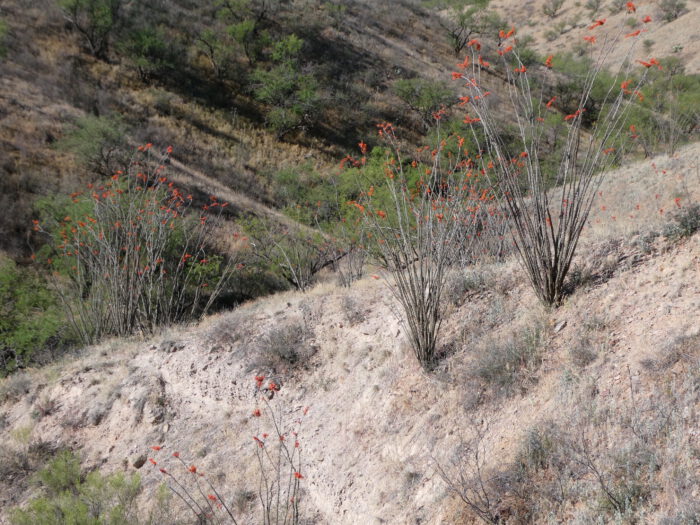
A key factor when choosing this 42-acre property was the fence around the perimeter protecting the land from livestock. Thus, the land as of 2025 has been free from cows, horses, and other habitat-damaging livestock since the year 2000. However, the days of “fencing it and calling it a preserve” have long-since passed. Active habitat management was needed. There was still vital ecological restoration work to be accomplished, addressing years of not-so-benign neglect by the previous owners.

Realizing that habitat loss is a leading cause of species extinctions, Vincent from the onset committed to managing the land via the following principles:
- A “natives only” approach, where each native species of flora, fauna, and fungi is supported, while nonnative ones are removed.
- Conservation of all the precious natural resources, such as wild land, wildlife species and water – no natural material is ever wasted or thrown in the trash, all is repurposed to benefit local biodiversity
- A “Nature first” mentality that questioned every decision that would impact the land – Do I really need to do this? Will it benefit the land? What is the most eco-friendly way of accomplishing this task? etc…

As a passionate Ethnobotanist, Wildlife Biologist and Naturalist, Vincent’s ongoing strategies have been guided by an understanding of the intricate life cycles and interactions of species. He also has taken into account the various essential elements required to support resilient habitats and their attendant species populations. This nuanced ecological management strategy has led to a profound transformation and recovery of the diverse habitats throughout the 42 acres at Raven’s Nest Nature Sanctuary
Vincent’s ongoing Ecological Restoration initiatives include:
- Invasive / Non-native Plant Species Removal
- Revegetation of disturbed areas with diverse, useful and edible native plant species
- Planting young Trees to restore damaged ecosystem
- Watershed Restoration
- Erosion control
- Establishing resilient and sustainable wildlife corridors
- Wildlife pond design and creation
- Rain-water Harvesting to support native plant species
- Passive and active Planting young Trees to restore damaged habitats
- Clustering planted species in “islands” to maximize the benefit to wildlife and to minimize water usage
Invasive / Non-native Plant Species Removal
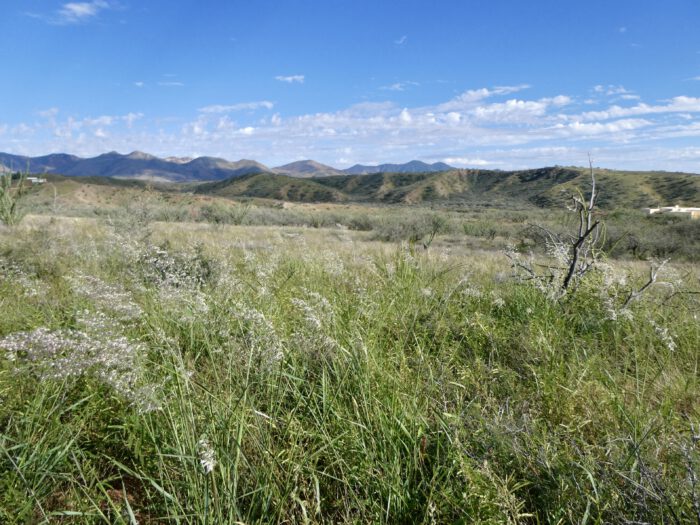
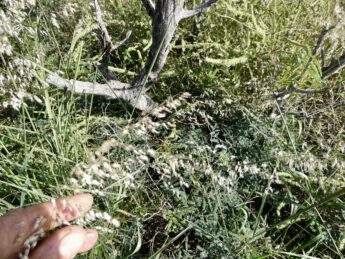
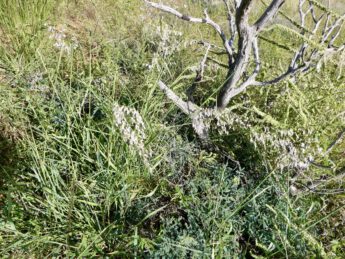
Since their arrival on March 18, 2008, Vincent made a long-term commitment to try to eradicate any nonnative plants via ecologically friendly practices – hand-pulling most species in particular and using them as mulch for native species. Simultaneously, he planted hundreds of native plants of dozens of local species – particularly trees, shrubs, succulents, and vines – around the house, the Sky Islands Discovery Center, the Sky Islands Safari Camp and other structures.

Landscape Restoration – 2025
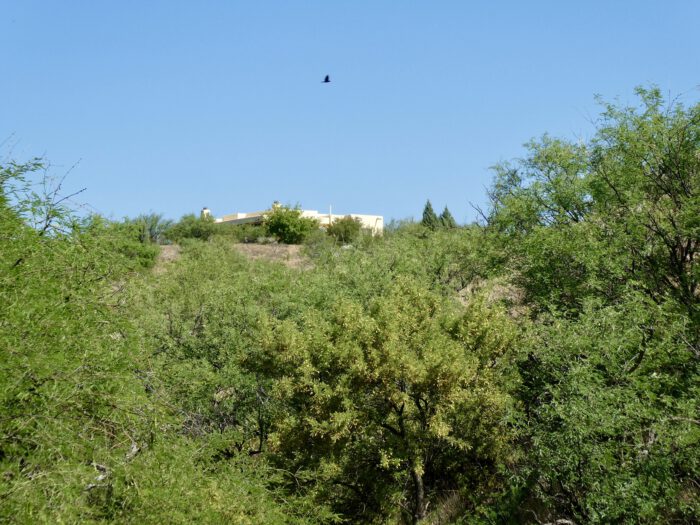
As soon as he arrived, Vincent began to restore the habitat encompassing the hill where house sits. He pulled the nonnative plants – Tumbleweed, London Rocket, Lehmann Lovegrass, and Natal Grass – by hand, allowing native plants to recolonize the habitat. Countless plantings of native species then followed, directly around the house. Vincent then laid out a well-marked trail that meanders through the restored zone near the house – appropriately dubbed the Sky Islands Vista Trail. With excellent views of the Patagonia and Pajarita Mountains, this easy path allows you to truly take in the scope of sprawling Raven’s Nest Nature Sanctuary, as well as the local Sky Island ranges at large.
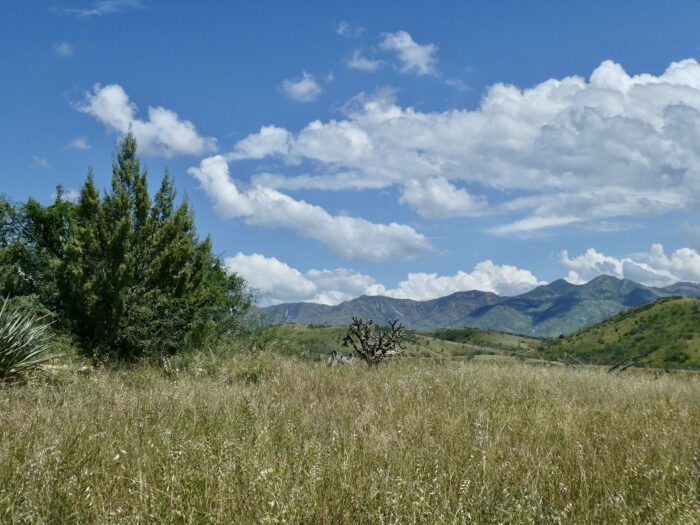
Perhaps most exciting of all, Vincent’s ecological restoration efforts have spawned many young Velvet Mesquite trees, as well as native shrubs near the Sky Islands Vista Trail, promising an expansion of the woodlands at the sanctuary.
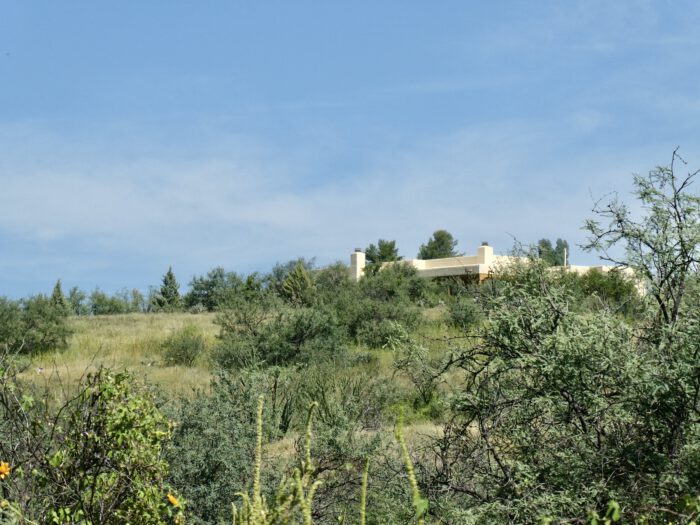
A long list of native species eagerly took over the restored habitat along the Vista Trail, including: Bolivian Cilantro, Saya, Janusia vines, Fairy Duster, Spreading Fanpetals, Partridge Pea, Catclaw Mimosa, Range Ratany, Spiny Hackberry, Engelmann’s Prickly Pear, Ocotillo, Wild Cotton, Fishhhok Barrel Cactus, Bird’s-foot Morning Glory, and Chainfruit Cholla. Spring wildflowers often spread out across the slopes by the house, only outdone by summer blossoms that carpet the ground.

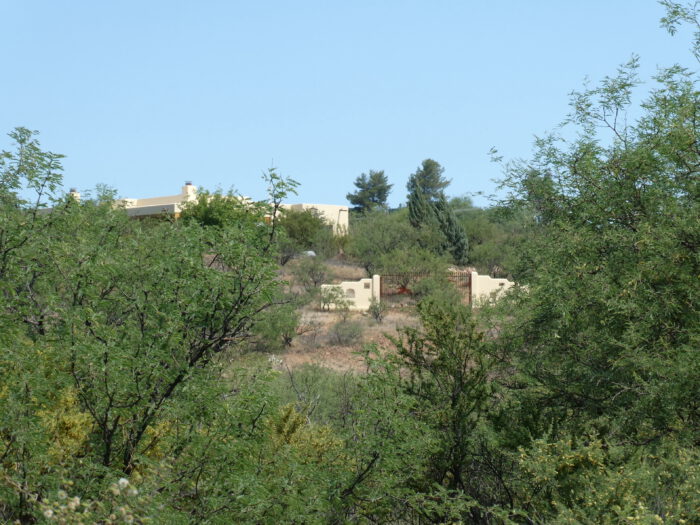
Grassland Restoration
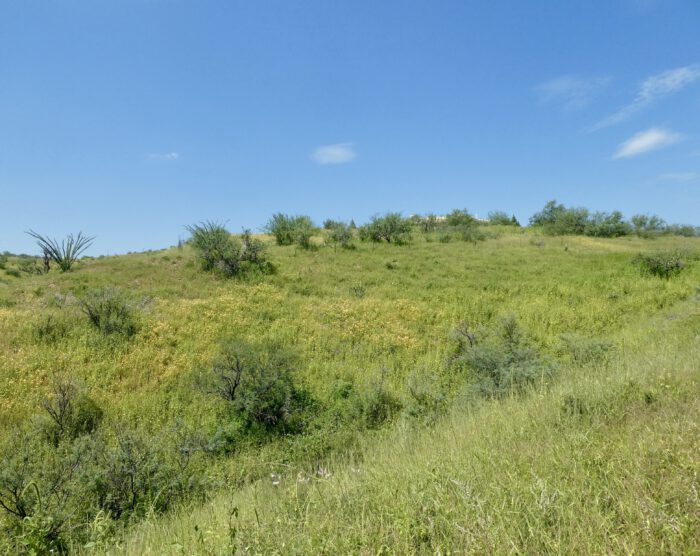
The grasslands near the house were in need of some of Vincent’s ecological expertise. Many of the same nonnative plants threatened to spread and reduce the biodiversity of this native prairie, so once again, Vincent set to work. Soon he turned the tide in favor of the native plants, allowing grasses such as Curly Mesquite, Tanglehead, Sprucetop Grama, and Sideoats Grama to take command of the habitat. Now, as of 2025, we have breeding Botteri’s and Cassin’s Sparrows, as well as both Gambel’s and Montezuma Quail that feed in the native grasslands.
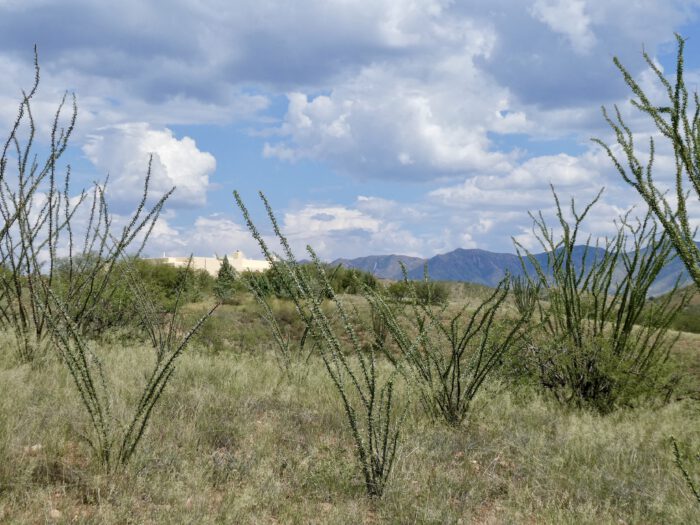
One of the most satisfying successes among many in the grasslands was the spread of Palmer Agave. This giant succulent in the Asparagus family has truly exploded in numbers since 2008, allowing a concurrent proliferation of native pollinators that rely on its long-lasting blossoms. Hummingbirds, Hooded and other Orioles, White-winged Doves, Verdins, Carpenter Bees, Sphinx Moths, and tropical Lesser Long-nosed Bats all pay homage to the rich nectar and/or pollen at the Agaves during Monsoon season.
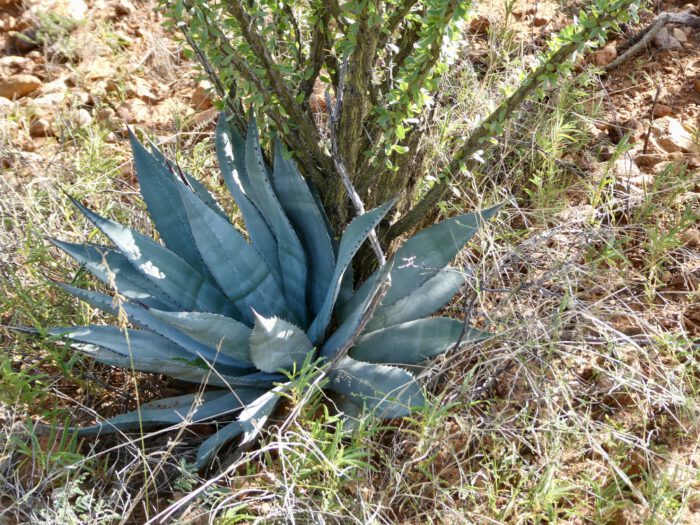


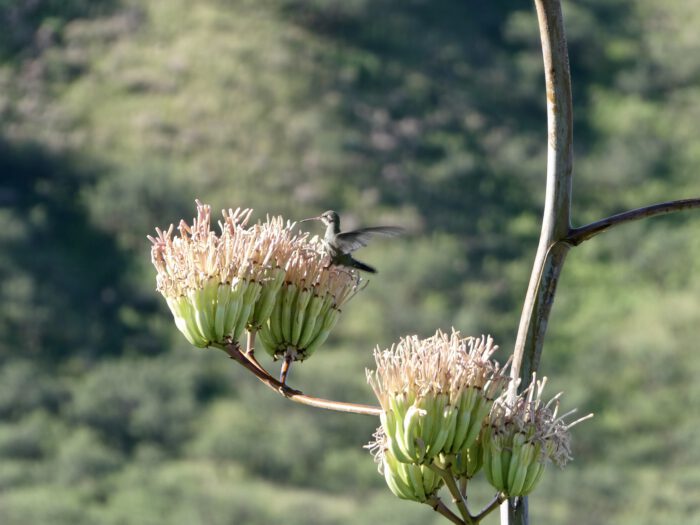
Along with the hundreds of other flowering plants at Raven’s Nest, our ecological restoration efforts have seen a profound resurgence in native pollinators, who in turn have fed birds, lizards, amphibians, mammals, and predatory invertebrates. All told, we have helped to expand the Food Web at the sanctuary, greatly benefitting its biodiversity.

Wildlife Ponds
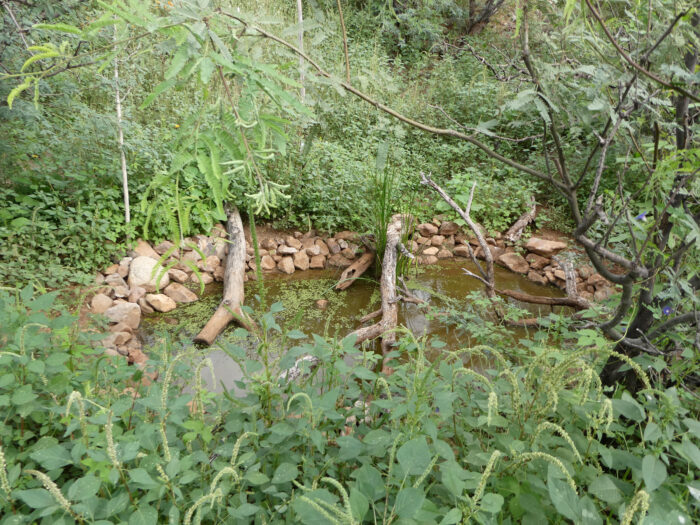
Vincent eagerly created wildlife ponds as gifts to the land and all the wildlife that reside at and visit Raven’s Nest. This labor of love has been a deeply rewarding and a transformative force within the Nature Sanctuary. The ponds were designed in a completely natural fashion, using eco-friendly materials. The cool waters invite thirsty wildlife as well as those looking for a nice refreshing dip.
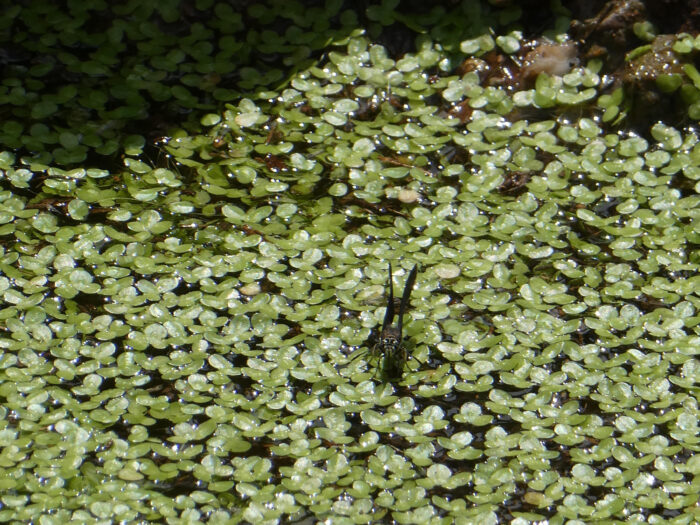
The Wildlife Ponds have proven to be a resounding success! We have even observed Osprey checking out the water, with periodic visits by Mexican Ducks, Great Blue Herons, and other aquatic birds. More regular avian visitors include a wide variety of hawks, warblers, orioles, tanagers, sparrows, etc…
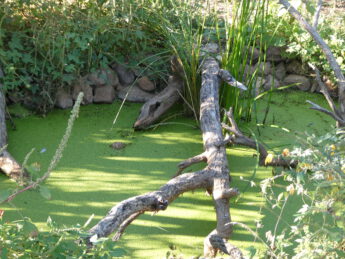

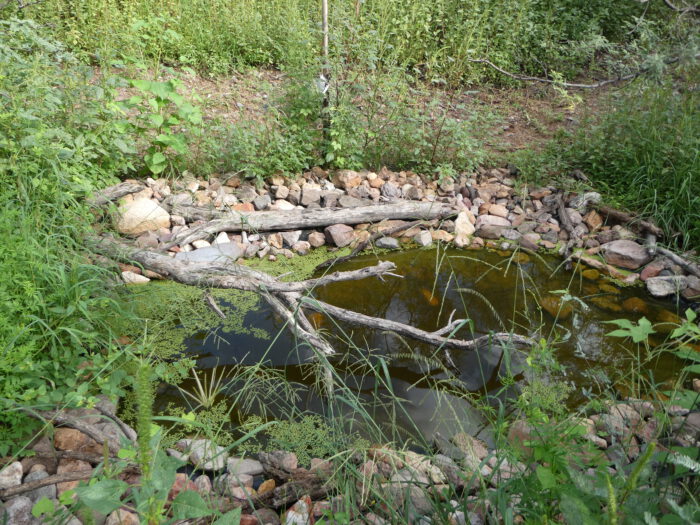
The name for Gray Hawk Pond was carefully chosen after we noted that it indeed was a favorite place to drink and bath for our nesting pair of these Mexican Specialty raptors.

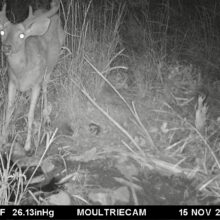
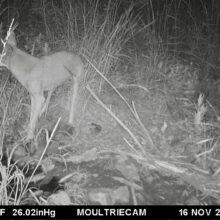
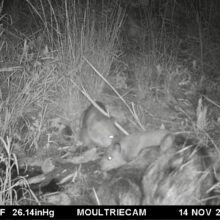
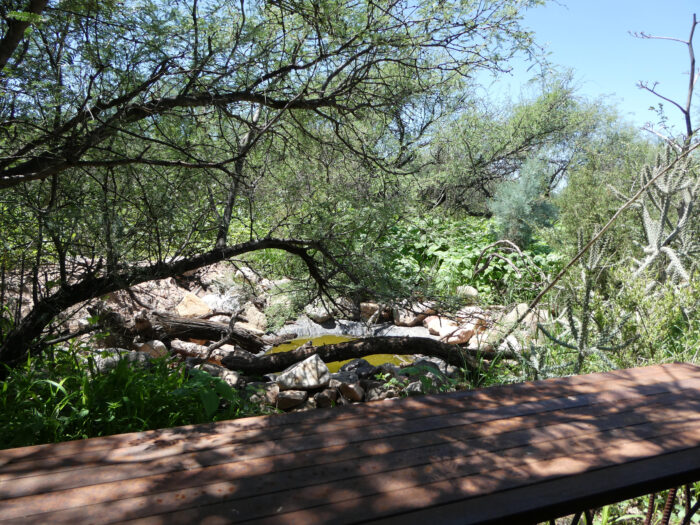

In one of our ponds we put in nonnative Goldfish, as they have no way of escaping. The Goldfish provide potential meals for piscivorous birds, mammals, and reptiles. Several other ponds host native Longfin Dace, a species of local minnow.
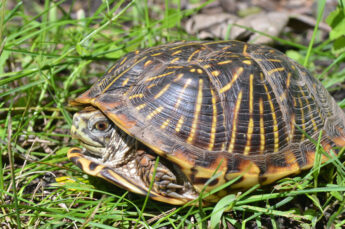
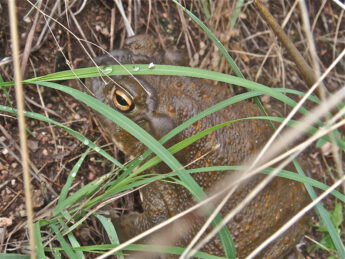
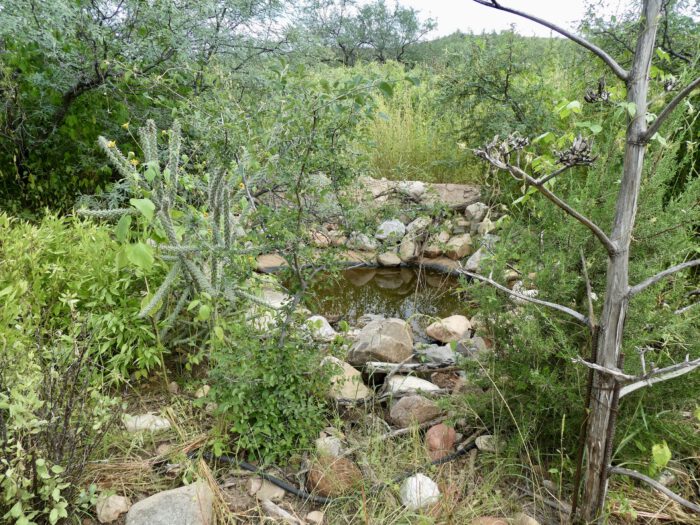
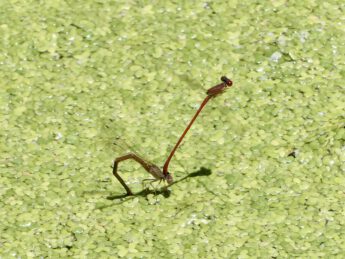
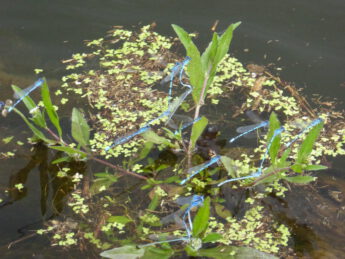

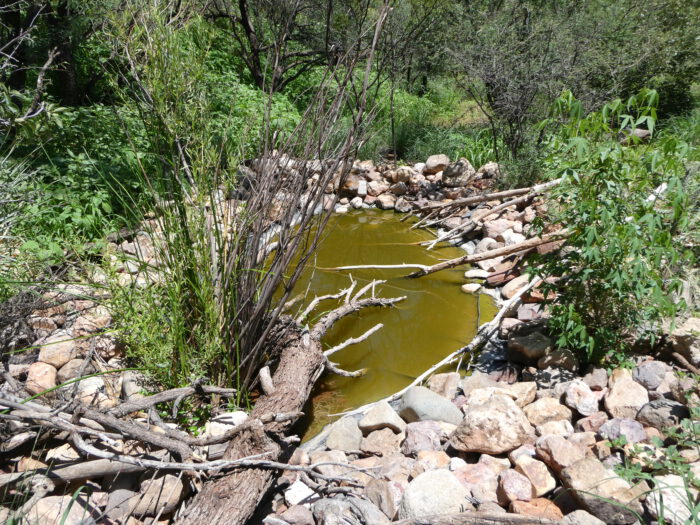
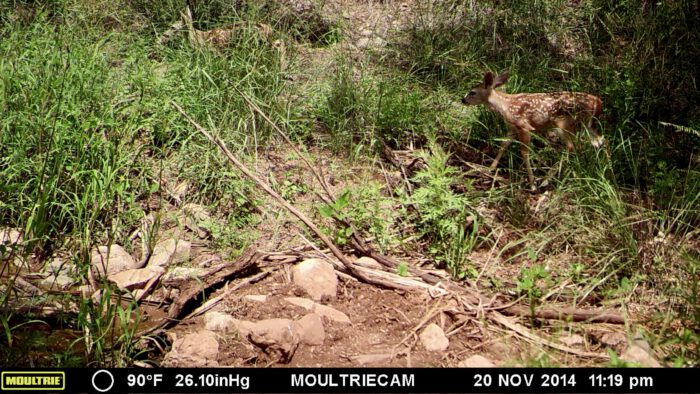
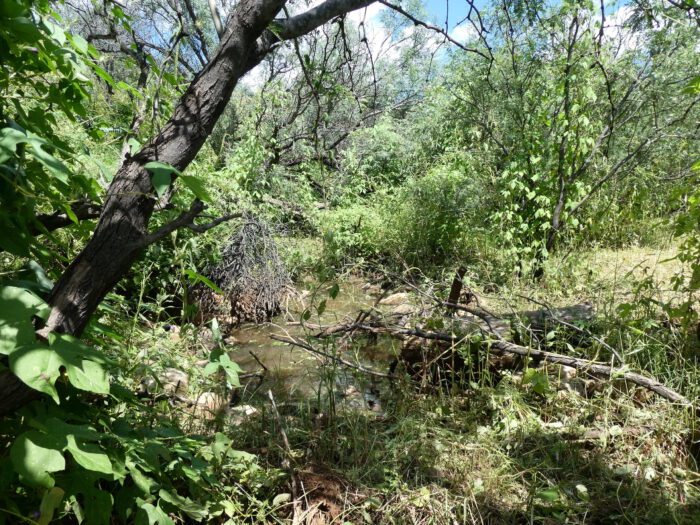
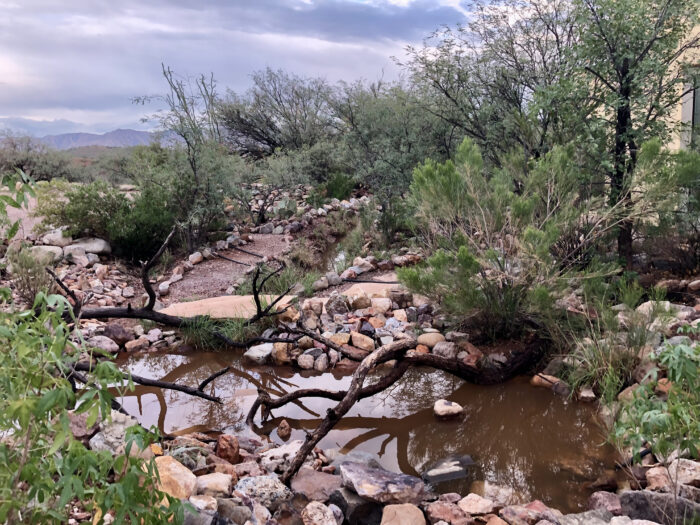
Watershed Restoration
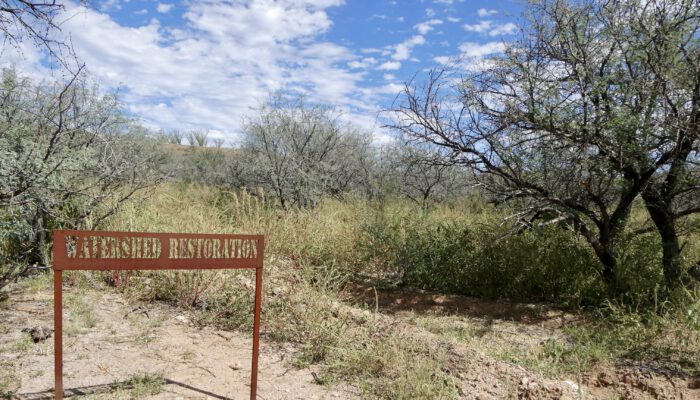
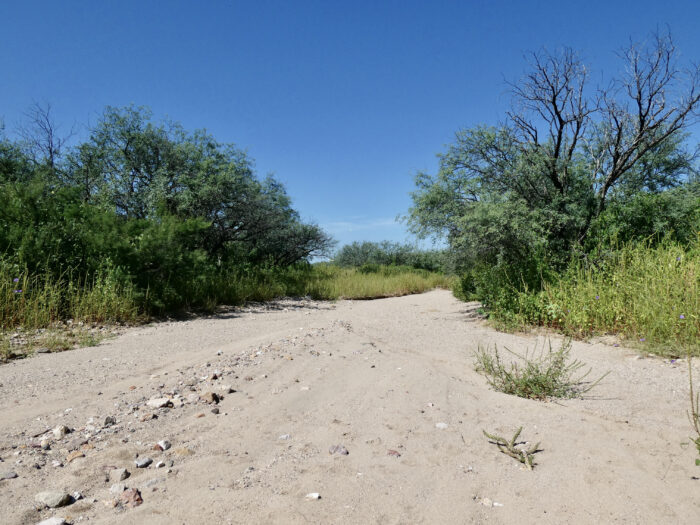
Not content to just establish our Wildlife Ponds, Vincent carefully observed the floodplain watershed that supports the Velvet Mesquite and Catclaw Acacia Woodlands at Raven’s Nest. Prior to 2008 mismanagement of the landscape unnaturally channelized sections of main arroyo had become channelized parts of the main arroyo which consequently was mostly devoid of plants. Setting out to remedy this, Vincent knew that we had to slow the water down, allowing it spread out once again.
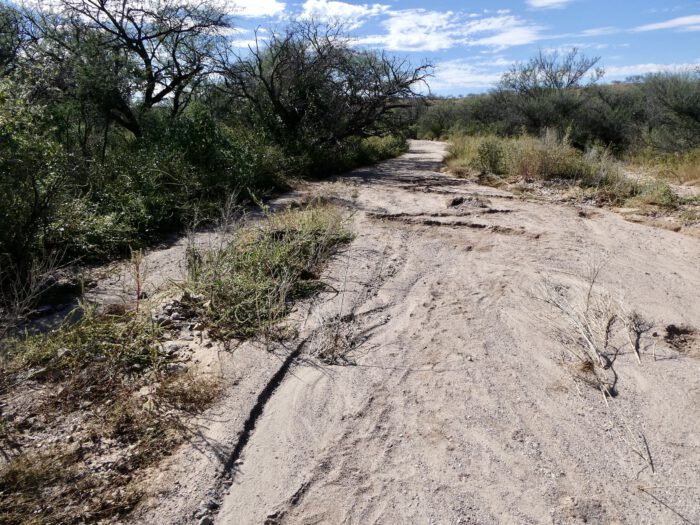
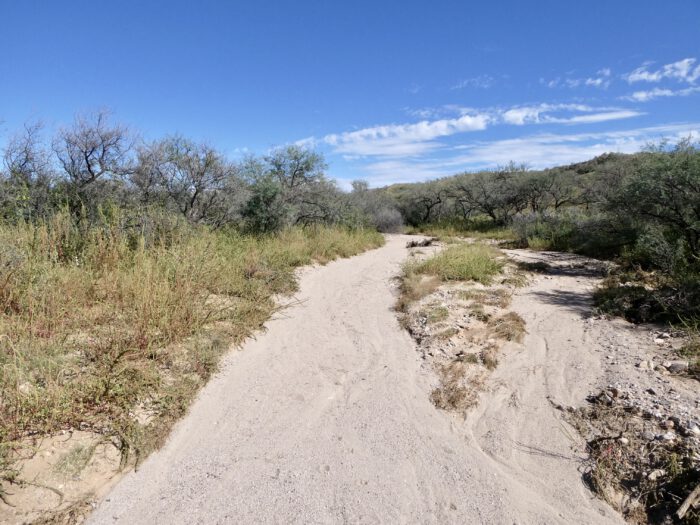
Vincent’s eyes became attuned to every facet of the preserve’s topography, as we searched for opportunities to restore the watershed. Some of our best observations came during storms, as we noted the precise behavior of various arroyos, sub-arroyos, and sheet flows over the landscape.
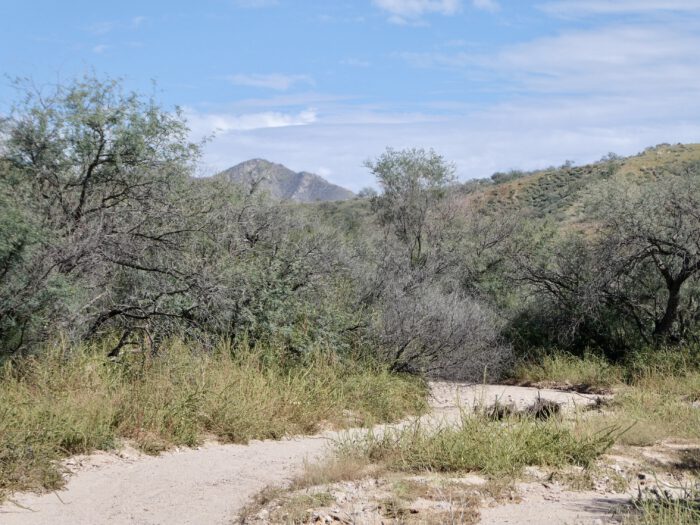
Once again – eschewing heavy machinery and opting for a hands-on, ecologically friendly approach – we set to work. Over the years we have established a permanent and extensive series of earthen berms, swales, habitat islands, and check dams that collectively allow the water to slow down and deeply penetrate into the soil, helping to recharge the aquifer and benefitting countless plants. Now the arroyos have sprung to life, hosting a dazzling array of native plants over the seasons.
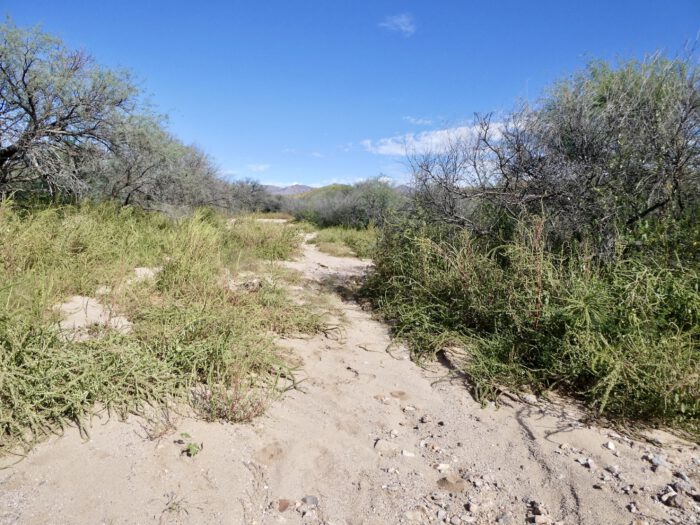
Numerous ephemeral pools and puddles form after good arroyo flows, as the water spreads throughout the woodlands in a healthy, braided stream and sheet flow. The “habitat islands” that we created – with old rebar, spare metal fencing, dead branches, and sand – have served as effective baffles that the arroyo waters have to navigate, effectively lowering their erosive force. The end result is a complex of arroyos at Raven’s Nest that now, once again, have a healthy flow supporting native biodiversity.
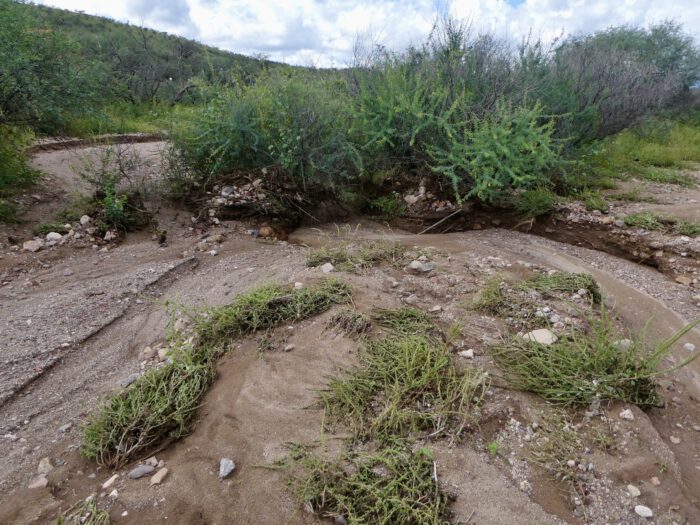
During our profuse Monsoon season it is possible to witness the spectacle of beautiful Arroyos flowing at Raven’s Nest Nature Sanctuary. Over the years Vincent closely studied the many running water conduits at the preserve, and can attest to the life-giving qualities of a good rain storm.

A significant portion of the 42 acres at Raven’s Nest is covered in Velvet Mesquite and Catclaw Acacia woodland. Most of our countless trees reside in our bottomlands, which by no coincidence is where a complex system of arroyos infiltrates every sector. Of course some rains merely soak into the ground. Others, though, result in a light to robust flow of water in arroyos both large and small.

Regardless of how they get flowing, arroyos support a significant level of biodiversity. The dense trees and shrubs furnish critical habitat for a myriad of species – breeding birds, lustful toads, lurking reptiles, furtive mammals, and countless invertebrates among them. Sonoran Desert Toads seeing to ingest various insects and even small vertebrates.



Hunting Gray Hawks looking to mug an unwary reptile or other hapless prey. Quick-silver Coachwhip snakes seeking to avoid such a fate. All these and more have graced our preserve – largely thanks to the arroyos, their periodic flooding, and the resultant rich habitats.
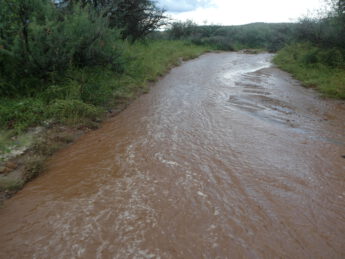
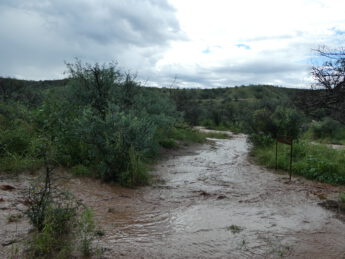
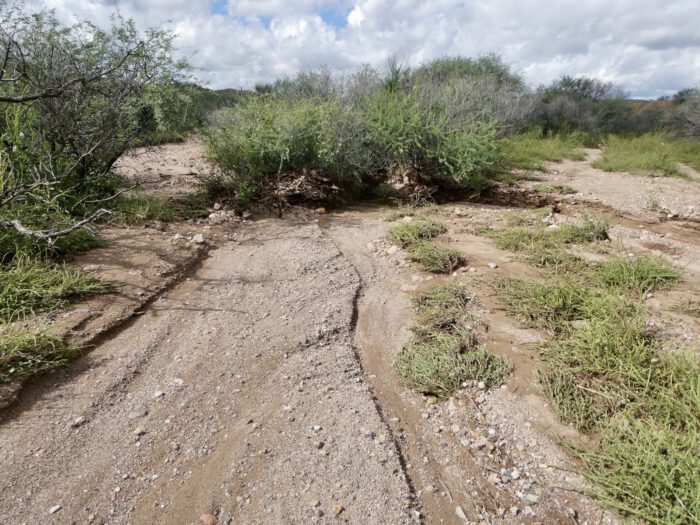
Countless natural contours in the landscape slow the water down, allowing it to soak the soil and hence support ecologically diverse habitats. Significantly, many seeds and even roots that take hold arrive with running water, adding a botanical dynamic to local arroyo habitats that would otherwise be largely lacking.

The water is a reddish-brown color due to its high particulate matter content or suspended soil laden in the water. As has been famously said of the Colorado River, arroyo water is “too thick to drink and too thin to plow”! Thus, arroyo habitats also benefit from the deposition of nutrients when they flood.
